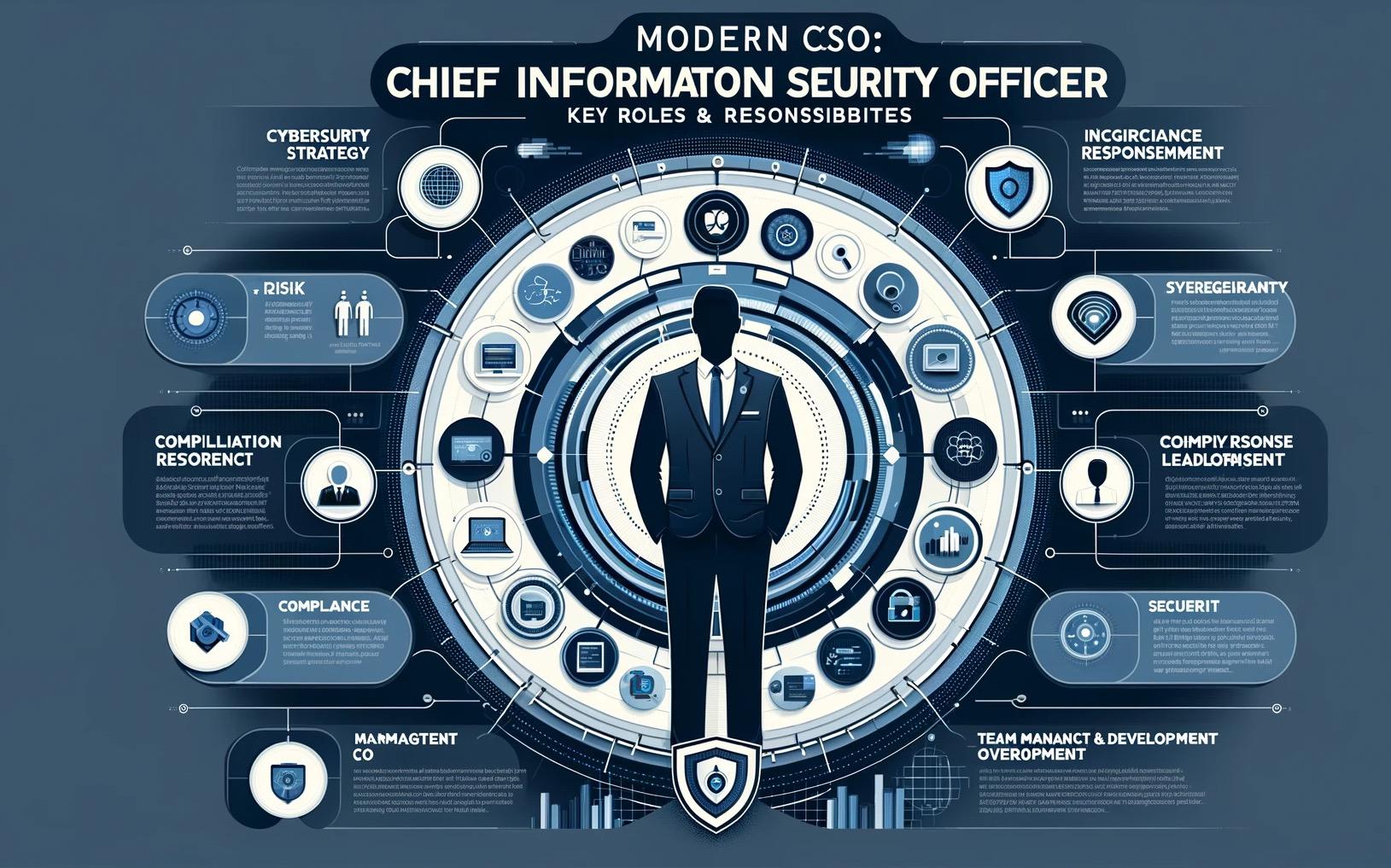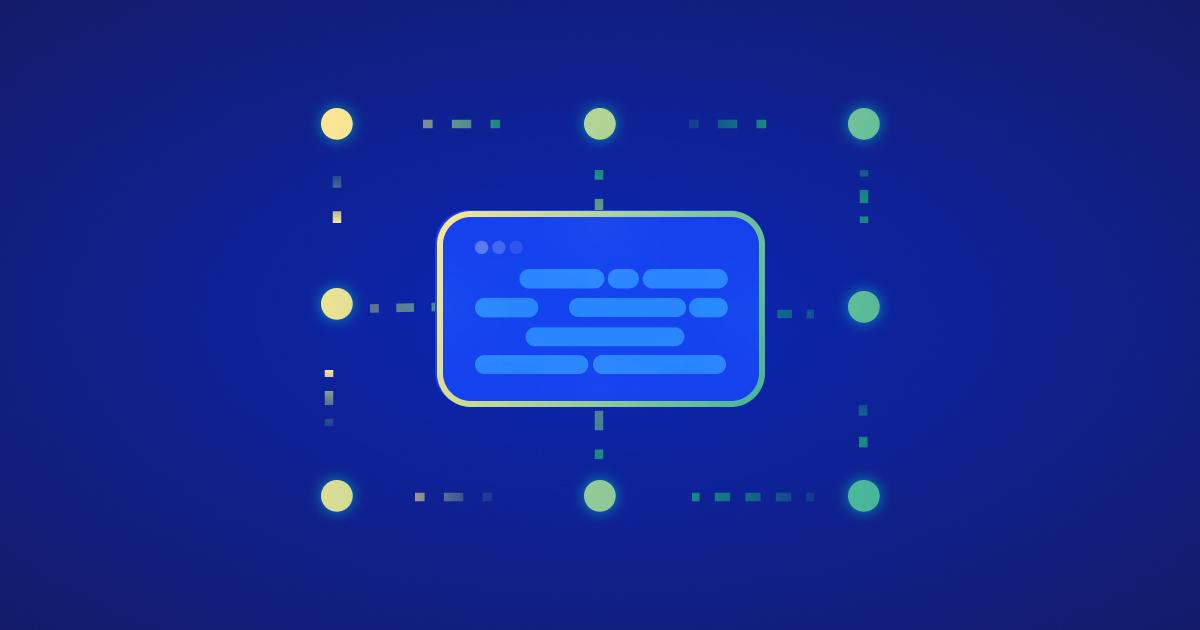Responsibilities of a modern CISO
April 18, 2024
0 mins readThe role of a Chief Information Security Officer (CISO) is critical in an interconnected business environment. A modern CISO will ensure that their organization is well-prepared to handle the myriad of cybersecurity challenges it faces. It is multifaceted, extending beyond traditional IT security to encompass various responsibilities to protect an organization's information assets. The CISO ensures that the organization is not just reacting to the current threat landscape but actively anticipating and preparing for future cybersecurity challenges. This proactive approach requires continuous learning, experimentation, and strategic planning to integrate cutting-edge solutions that protect the organization's assets and support its business objectives.
There are many ways CISO can influence the way cybersecurity is built into the core process of organization
Strategic planning and policy development
Leadership and organizational competency
Operational management
Technical proficiency
Financial acumen
Advocacy and influence
Ethical and legal considerations
CISO must balance technical expertise with strategic acumen, leadership skills, and the ability to influence and engage with the organization’s highest levels of management. Now, let’s understand them in detail.

Strategic planning and policy development
The strategic leadership role is crucial in ensuring the organization's information security strategy is robust, proactive, and aligned with its overall business objectives. There are four pillars of strategic leadership for a CISO:
Risk management framework: Establishing and maintaining a risk management framework to identify, analyze, and mitigate cybersecurity risks.
Policy formulation: Crafting comprehensive information security policies, procedures, and guidelines per the organization's objectives and regulatory requirements.
Compliance: Ensuring adherence to legal, regulatory, and contractual obligations concerning information security and privacy.
Security architecture: Overseeing the design and implementation of a secure enterprise infrastructure that aligns with the organization's strategic plan.
Leadership and organizational competency
The CISO's leadership is characterized by articulating a clear strategy for developing and executing information security initiatives that support business objectives. Establishing governance structures that ensure accountability and alignment with the strategic direction for security and risk management, influencing the organization’s leadership and key decision-makers to secure buy-in and resources for implementing security initiatives, and driving change across the organization by advocating for and implementing new security processes, technologies, and behaviors are all important aspects of the CISO role.
Leadership: Providing strategic leadership in the development and implementation of information security and risk management programs.
Team development: Building and maintaining a qualified information security team capable of managing and mitigating risks. Also, making sure to:
Identifying skill gaps and recruiting individuals with the necessary expertise to address the evolving security needs of the organization.
Designing an organizational structure for the security team that promotes efficiency and effectiveness.
Providing opportunities for professional development to ensure the team remains knowledgeable about the latest threats and technologies.
Training and awareness: Developing comprehensive training programs for all employees to understand their role in maintaining security. Creating a security training curriculum tailored to different roles within the organization, ensuring relevance and engagement.
Stakeholder communication: Communicating with stakeholders to ensure an understanding of cybersecurity risks, strategies, and initiatives. Maintaining communication transparency gives stakeholders a realistic view of the Organization's security posture and potential risks. Having a clear communication plan for when security incidents occur, ensuring that stakeholders are informed in a timely and appropriate manner.
Operational management
Operational management is another fundamental area of a modern CISO's role, focusing on the day-to-day activities that ensure the protection of an organization's digital assets. Here's a detailed overview of the responsibilities within this domain:
Security operations: Managing the Security Operations Center to monitor and analyze the organization’s security posture continuously. This involves overseeing the identification, investigation, and resolution of security breaches. Overseeing the operation of the organization's security infrastructure, including the Security Operations Center (SOC).
Incident response: Developing and maintaining an incident response plan and leading the response to security incidents. After an incident, perform a thorough analysis to identify lessons learned and update the response plan accordingly.
Business continuity: Ensuring the information security strategy incorporates business continuity and disaster recovery plans. Regularly testing and updating these plans to ensure they are effective and can be executed in an actual disaster scenario. Documenting and communicating business continuity plans within the organization.
Vendor management: Managing relationships with vendors to ensure they comply with the organization's security policies. Conducting thorough security assessments of potential vendors before forming partnerships.Evaluating the risks associated with third-party vendors and taking steps to mitigate them, including the implementation of controls or the adjustment of business processes.
Technical proficiency
The technical proficiency of a modern CISO is paramount for protecting an organization's information assets. A CISO not only safeguards the organization's technological assets but also ensures that the company maintains a robust security posture in a landscape of ever-evolving threats. This requires a combination of up-to-date technical knowledge, a strategic approach to technology implementation, and a meticulous eye for detail in security reviews and compliance audits.
Technology oversight: Keeping abreast of current and emerging security technologies and cybersecurity threats. Assessing security products and vendors for their ability to meet the organization’s specific security needs and compliance requirements.
Data protection: Ensuring the confidentiality, integrity, and availability of data through appropriate cybersecurity measures. Crafting policies and procedures that protect data across all platforms and environments, from on-premises servers to cloud services.
Security reviews and audits: Conducting or overseeing regular security reviews and audits to assess the effectiveness of security measures. Developing a schedule for regular security reviews and audits that align with industry best practices and regulatory requirements.
Financial acumen
A CISO can effectively manage the cost of cybersecurity, justify security investments, and ensure that the organization’s financial and information security strategies are in sync. This requires a keen understanding of the cost implications of security initiatives and the financial ramifications of security incidents.
Budgeting: Creating a comprehensive budget plan that accounts for all aspects of the information security program, including personnel, technology, training, and incident response. Allocating financial resources in a way that prioritizes critical security needs and maximizes return on investment. Articulating the rationale for budget requests to senior management by linking expenditures to security strategy and business objectives.
Cost-benefit analysis: Evaluating the potential financial impact of cybersecurity initiatives, including the cost of implementation versus the expected benefits, such as reduced risk or compliance with regulatory requirements. Demonstrating how cybersecurity investments add value to the business, whether by protecting against losses, enabling new capabilities, or improving operational efficiencies.
Advocacy and influence
CISOs are key players not only within an organization but also in the broader industry and community, shaping and promoting cybersecurity practices and policies that advance the field and protect broader societal interests. A CISO provides strategic and operational guidance to C-level executives and the board of directors, ensuring they understand the implications of cybersecurity decisions.
Advisory role: Acting as an advisor to senior leadership on all matters about information security. CISO helps leadership navigate the complex cybersecurity landscape, offering insights that shape company policies and strategies.
Influencing policy: Participating in industry and government initiatives to shape cybersecurity policy and practices. Advocates for cybersecurity policies that balance protection with innovation and economic growth.
Public relations: Sometimes, this involves acting as the public face of the organization's security efforts, especially in the aftermath of security incidents.
Ethical and legal considerations
Ethical and legal considerations form the backbone of a modern CISO’s role in an organization, reflecting the growing importance of data protection and ethical management of information.
Ethical leadership: Championing ethical behavior in the handling of information and in response to security incidents. Setting high ethical standards for the security team and the entire organization in the handling of sensitive data. Advocating for transparency in security operations while balancing the need for confidentiality with the public’s right to be informed, especially in the event of a breach.
Data privacy: Ensuring the organization's practices comply with data privacy laws and regulations. Keeping abreast of international, federal, and state data privacy laws and ensuring the organization complies with them.
Summarizing the modern CISO
The role of a Chief Information Security Officer (CISO) has evolved into a complex position that demands a blend of strategic planning, leadership acumen, operational management, technical expertise, financial savvy, advocacy skills, and a strong ethical and legal compass. The modern CISO is a central figure in navigating the complexities of cybersecurity. This role extends beyond the traditional boundaries of technical oversight, encompassing a broader spectrum of strategic, operational, and ethical responsibilities. The modern CISO is a visionary, developing comprehensive strategies that align with the organization's objectives and crafting policies that enforce robust cybersecurity measures.
A CISO's role is to ensure the organization's information assets are well-protected against current and future threats while maintaining ethical integrity and legal compliance. This requires not just a reactive stance but a proactive, innovative approach that embeds security into the fabric of the organization's culture and operations. The modern CISO must, therefore, be a strategist, a tactician, an influencer, and a guardian of the organization's digital integrity.





















